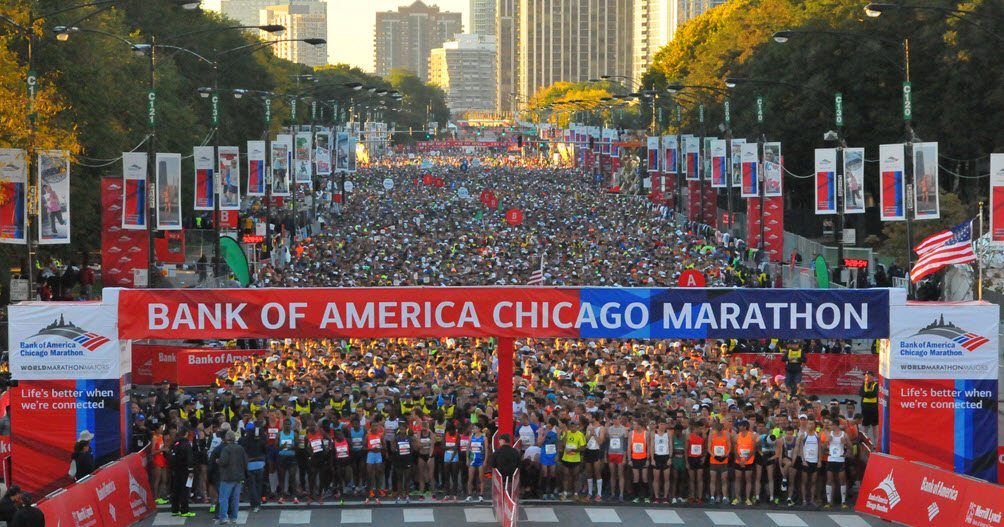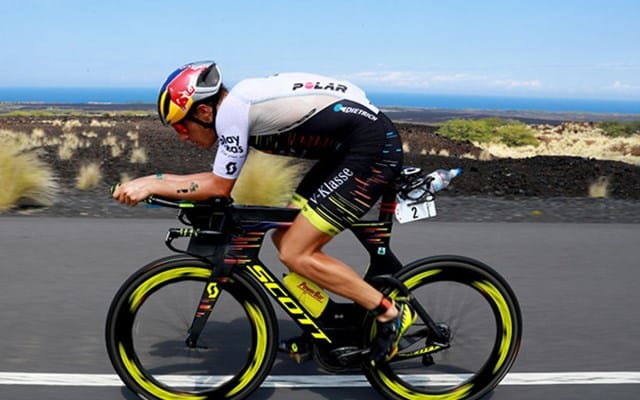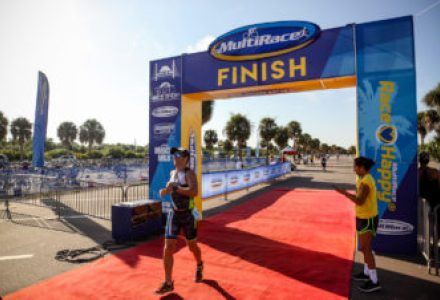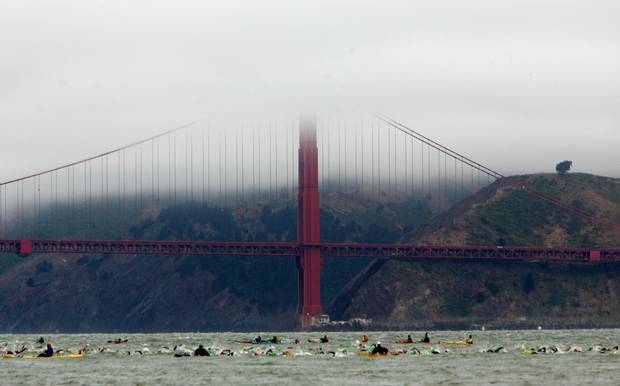
by Brad Minus | Mar 5, 2013 |
Unfortunately, the triathlon season started on a tragic note this past weekend at the Escape from Alcatraz Triathlon. Not long after diving into the frigid 50-degree waters of the San Francisco Bay, 46-year-old Ross Ehlinger, from Austin, Texas, suffered a fatal heart attack despite the heroic attempts made by the San Francisco EMS.
Unfortunately, Ehilnger was not the first to die of heart problems in the open water swim portion of the

triathlon. Deaths have been on the increase in triathlons and the vast majority of them occurring during the open water swim leg. This post is not intended to scare into never swimming in open water or ever competing in triathlons, but provide information about the precautions to prevent these types of accidents from occurring.
1. Check yourself: If there is knowledge of health and/or heart problems or genetic predisposition to cardiac irregularities, get cleared by a physician before starting a training program and then again before racing. An EKG(Electrocardiogram) will depict any irregularities that may be cause for concern.
2. Warm up: Enter the water before the start to acclimate to the water temperature. If it is not an option, do jumping jacks, push-ups or jump squats to get the blood pumping.
3.
Prior Wetsuit Swimming: If this is the initial open swim in a wetsuit, make sure to get some

experience swimming in it to understand its somewhat constricting feel. Even a few laps in the pool helps.
4. Practice in open water: Open water swimming is very different from swimming in a pool and can be quite frightening It is therefore important to get some experience in open water; it might help unburden the uneasiness and nerves. Make sure to swim with others and there is a lifeguard nearby.
5. Work on the mental game prior to the next open water triathlon. There are a lot of things people tend to stress about, but with a little mental preparation, most situations that appear will not come as a surprise and can be dealt with.
These are a few small details I have gathered from Kevin Koskella,
Tri Swim Coach, which are mostly common sense, at least to most triathletes, but if it can help one athlete be more prepared, I will quote Kevin and every other swim coach until my fingers fall off. (Then I’ll use my toes, and then my tongue.)
There have been deaths surrounding not just triathlon, but marathons and other endurance races as well. In my opinion it comes to preparedness. Evaluating skill, fitness and injury should take president over our ‘Go Hard or Go Home’ attitude.
Of course after the evaluation is complete and the fear of finishing has been quelled, ‘GHGH’ is a great mind frame.
“Just don’t DO IT…Do It RIGHT!”
Carpe Viam!
by Brad Minus | Oct 9, 2012 |
It happened even before I realized it. I was on the ground with a burning sensation on my chest and both of my knees. “OUCH! Son of monkey’s uncle!” (edited for content). I face planted during a sub eight minute mile during a run on Davis Island this morning. (Pause for laughter) (Pause for more laughter) It’s ok I’ll wait.
I hope everyone does laugh because it is funny. Here I am, Ironman, Running Coach and motivator, on the ground bleeding for a full 10 seconds. What makes it even more funny, is that I teach two major aspects when I coach form. First is to raise your knees in order to make you lighter like a gazelle, second is to look five feet in front of you. Well,obviously if I was actually following my own advice this wouldn’t have happened. (Pause for more laughs)
 |
| Ouch! |
There I am. I scraped and bruised both hands, my chest and both knees. Needless to say the shower hurt and of course the Hydrogen Peroxide “bath” stung as well, but nothing compared to my ego. Don’t get me wrong it was still dark, and the curb was one of those six-inch step ups, but I still should have seen it.
What makes matters worse, is that I was running with Scott and Sarah out by the airport and a biker came by and suggested we have lights on because he couldn’t see us. I understood that, it made sense, but would I even think about adding more weight for lights? I have ran that route a thousand times, he wasn’t going to hit me and I sure would never hurt myself running. Biking? Maybe, but surely not just running. That incident happened all of ten minutes before I bit the concrete. It tastes a little salty this time of year from the sweat that seeps off all the runners, but it isn’t bad.
It did remind me of some safety aspects we as athletes need to think about, especially if we work out in the morning or at night. Daylight is not coming as early or staying as late this time of year so we need to take some more precautions. Here is just a couple of gentle reminders of tips you may know or may not:

1) Use a reflector belt when running in darkness. They are light and you can just put them around your waist. I was required to have these belts in the military and I hardly remembered they were there, but I also could see the people around me.
2) Lights come in all shapes and sizes both to help you see and help bikes, people and cars see you. There is a great visor light that allows you to see the road in front of you and also lets the cars see you. Also there are plenty of red lights that can be attached to your shorts or fuel belt for your back.
3) It is not a bad idea to run with pepper spray or some kind of defensive spray that can be reached easily if you run alone. This means guys too. Don’t get an ego if you are out there alone. No one will be around to see you anyway. Of course the best thing is to always run in groups at night and it is a heck of a lot more fun.
4) If you are running on the road, run on the left against traffic. First, it makes it easier for cars to see you and you have more time to assess if you are in danger to move out of the way. Second, it is actually the law. I have never seen it enforced, but it is the law. Pedestrians against traffic, bikers with traffic.
5) Keep a change of clothing or at least a shirt change in your car. Sometimes you don’t realize how much you sweat during the cooler months and when you start to cool down it will get uncomfortable. After your cool downs, change your shirt before heading home or anywhere else. It may be just a short ride, but you will thank me for it.








 triathlon. Deaths have been on the increase in triathlons and the vast majority of them occurring during the open water swim leg. This post is not intended to scare into never swimming in open water or ever competing in triathlons, but provide information about the precautions to prevent these types of accidents from occurring.
triathlon. Deaths have been on the increase in triathlons and the vast majority of them occurring during the open water swim leg. This post is not intended to scare into never swimming in open water or ever competing in triathlons, but provide information about the precautions to prevent these types of accidents from occurring. experience swimming in it to understand its somewhat constricting feel. Even a few laps in the pool helps.
experience swimming in it to understand its somewhat constricting feel. Even a few laps in the pool helps.